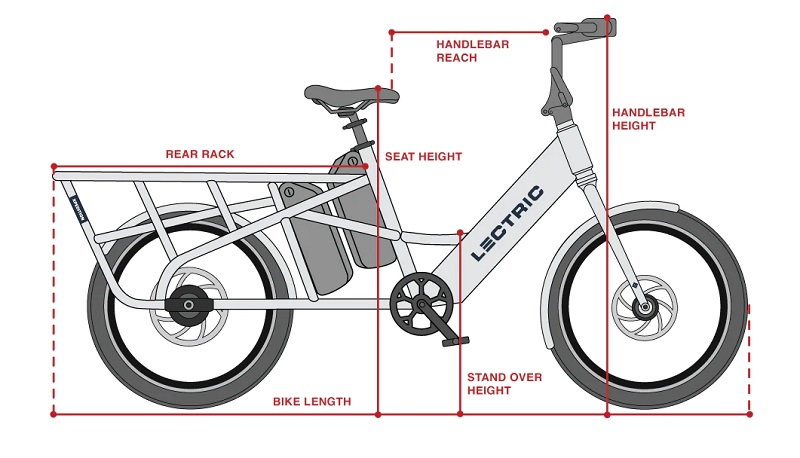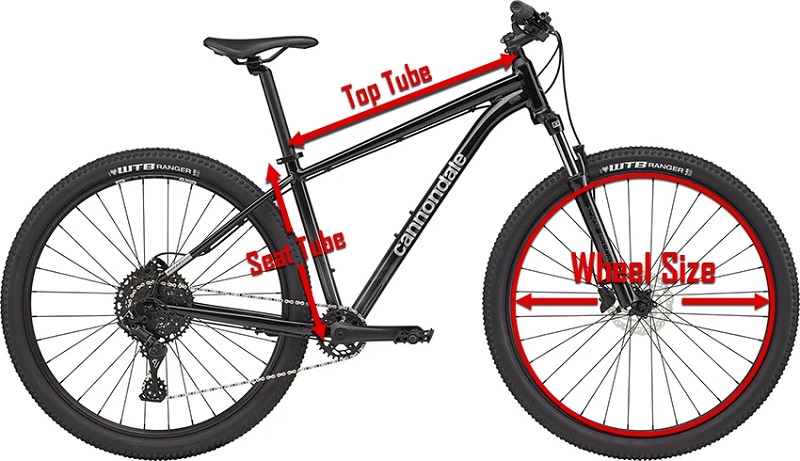Tips
Bike Frame Size Chart: For Men, Women, & Kids
Selecting the proper bike frame size is essential for ensuring not only a comfortable ride but also for maintaining optimal power and efficiency. The ideal bike frame size for an individual varies depending on factors such as height, inseam length, and the type of cycling one is involved in. This guide offers a comprehensive Bike Frame Size Chart ensuring that cyclists of all ages and sizes find their perfect match.
Bike Frame Size Chart: For Men, Women, & Kids
Before diving into the charts, it’s vital to understand how bike frame measurements are determined. Typically, the measurement is taken from the center of the bottom bracket (where the pedal arms connect) up to the top of the seat tube. However, as manufacturers differ in their approaches, understanding these basics becomes crucial.
Bike Frame Size Chart for Men
When selecting a bike frame size, men should consider both their height and inseam length:
| Height (ft/in) | Inseam Length (in) | Recommended Frame Size (cm) |
| 5’0″-5’3″ | 26″-28″ | 47-49 cm |
| 5’4″-5’7″ | 28″-30″ | 50-52 cm |
| 5’8″-5’11” | 30″-32″ | 53-55 cm |
| 6’0″-6’3″ | 32″-34″ | 56-58 cm |
| 6’4″ and above | 34″ and above | 59 cm and up |
Bike Frame Size Chart for Women
Women’s physiology typically differs from men’s, which is why a separate chart is essential:
| Height (ft/in) | Inseam Length (in) | Recommended Frame Size (cm) |
| 4’10”-5’1″ | 24″-26″ | 44-46 cm |
| 5’2″-5’5″ | 26″-28″ | 47-49 cm |
| 5’6″-5’9″ | 28″-30″ | 50-52 cm |
| 5’10” and above | 30″ and above | 53 cm and up |
Bike Frame Size Chart for Kids
It’s crucial to ensure kids ride bikes that are appropriate for their size for safety and to cultivate a love for cycling:
| Age | Height (ft/in) | Recommended Frame Size (in) |
| 2-4 | 2’10”-3’4″ | 12″ |
| 4-6 | 3’5″-3’10” | 14″ |
| 6-8 | 3’10”-4’2″ | 16″ |
| 8-10 | 4’2″-4’6″ | 18″ |
| 10-12 | 4’6″-4’10” | 20″ |
When choosing a bike, also consider factors such as the type of riding you’ll be doing, your flexibility, and your preference for a more upright or aggressive position. Always test ride a few sizes if possible before making a decision. Remember, the above chart is a guideline; individual needs and preferences can vary.

Factors to Consider Beyond the Charts
When selecting the right bike frame size, it’s important to look beyond the basic height-based charts. Various factors can influence the best choice for an individual, and it’s essential to consider them for a comfortable and efficient cycling experience. Here are some factors to think about:
Purpose of the Bike
The intended use can determine the right fit. For instance, a touring bike might have a more relaxed fit compared to a race-oriented road bike. Similarly, downhill mountain bikes and cross-country mountain bikes might differ in their ideal fit.
See more: types of bicycle frames
Rider Flexibility
If a rider has limited flexibility, they might prefer a more upright position, which could affect the frame and handlebar selection.
Body Proportions
People have different proportions. Someone might have a long torso and short legs or vice versa. This can influence top tube length, handlebar reach, and saddle height.

Inseam Length
The distance from the ground to your crotch can be more relevant than overall height. This length affects standover height, which is the height of the frame’s top tube where a rider stands while straddling the bike.
Riding Style
Some riders prefer a more aggressive, forward-leaning posture, while others might want a relaxed, upright position. This preference can affect stem length, handlebar height, and saddle position.
Test Rides
No matter how theoretically perfect a bike size seems on paper, always try to test ride before buying. It gives you a feel of the bike and lets you adjust positions, if necessary.
Saddle Height and Position
Even after selecting the right frame size, adjusting the saddle height and its forward or backward position can make a significant difference in comfort.
Handlebar Height and Reach
Depending on your comfort and riding style, you might need to adjust the handlebars’ height or get a longer/shorter stem.
Foot Position on the Pedals
How you position your foot on the pedal (ball of the foot, middle, etc.) can impact your riding comfort and efficiency.
Bike Geometry
Bikes come in various geometries. For instance, two bikes might both be labeled 54cm but have different angles and tube lengths. This can affect how the bike feels when ridden.
Suspension
If you’re looking at mountain bikes or any bike with suspension, consider how the suspension might affect the effective size and geometry when it’s active.
See more: Bike Frame Parts

Experience Level
Newer riders might prefer a more conservative and comfortable fit, while experienced riders might want a fit tailored to performance.
Gender-Specific Designs
Some bikes are designed specifically for women, considering average body proportions. However, anyone, regardless of gender, might find them comfortable, so they’re worth considering.
Professional Fitting
If you’re investing in a high-quality bike or planning to spend significant time cycling, consider getting a professional bike fit. This service will tailor a bike to your specific body measurements and riding style.
The right fit can greatly enhance your cycling experience, reduce the risk of injury, and improve performance. Take the time to ensure you get the right size and make the necessary adjustments.
Conclusion: Ensuring the Best Ride Experience
Having the right bike frame size significantly influences one’s cycling experience. Using the Bike Frame Size Chart for Men, Women, & Kids, along with considering other personal and bike-specific factors, will ensure that riders have the best possible match, leading to improved comfort, efficiency, and overall enjoyment of the ride.

